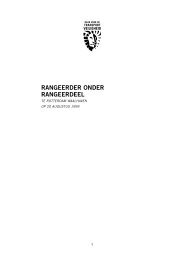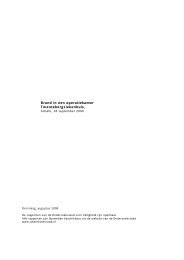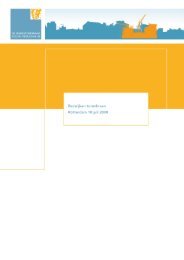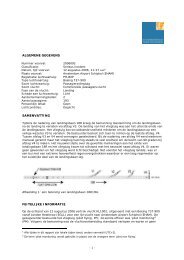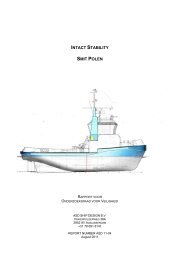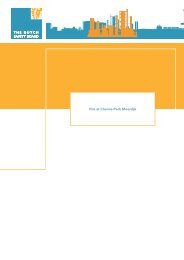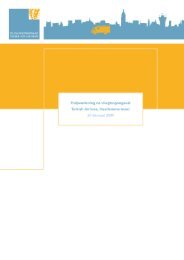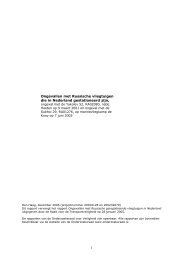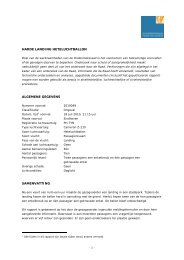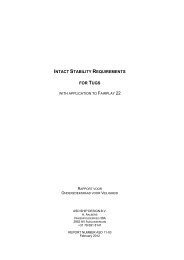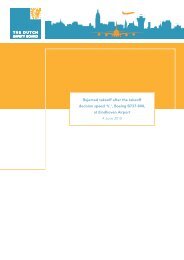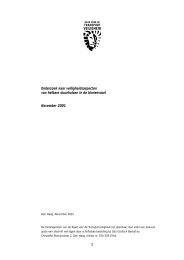Breaking of mooring lines whilst mooring m.v. Edisongracht between ...
Breaking of mooring lines whilst mooring m.v. Edisongracht between ...
Breaking of mooring lines whilst mooring m.v. Edisongracht between ...
You also want an ePaper? Increase the reach of your titles
YUMPU automatically turns print PDFs into web optimized ePapers that Google loves.
The vessel was turned around, under pilot’s advise in the channel near the <strong>mooring</strong> buoys (seeposition 2 in figure 3). The two tugs, on standby, assisted as found necessary.Figure 3: The performed manoeuvres (source: shipping company)3.4 Setting out the <strong>mooring</strong> <strong>lines</strong>The vessel was positioned <strong>between</strong> the <strong>mooring</strong> buoys with the assistance <strong>of</strong> the tugs. Similar tothe two previous times, both the fore and stern would be secured to the <strong>mooring</strong> buoys, with thebow <strong>of</strong> the vessel facing the northern direction. In order to bridge the distance to the <strong>mooring</strong>buoy, which was approximately 90 metres, the fixed starboard <strong>mooring</strong> line on the winch drum wasextended with another <strong>mooring</strong> line with a minimum breaking load (MBL 7 ) <strong>of</strong> 36.3 tons (see figure4) through a steel shackle with a Safe Working Load (SWL 8 ) <strong>of</strong> 20 tons. Synthetic <strong>mooring</strong> <strong>lines</strong>with a maximum strain <strong>of</strong> 18% were used on board the vessel.Figure 4: Example <strong>of</strong> a comparable <strong>mooring</strong> line extension as used during the <strong>mooring</strong> manoeuvreAround 8:50 a.m., the extended starboard <strong>mooring</strong> line was released through the centre lead <strong>of</strong>the forecastle and brought to and secured to the <strong>mooring</strong> buoy by boatmen*, using a motorboat. Asecond <strong>mooring</strong> line that had been extended in the same way as the starboard <strong>mooring</strong> line andoriginated from the fixed port winch was also released by the centre lead and secured by theboatmen to the <strong>mooring</strong> buoy. In the meantime, the pilot directed the tug from port to starboard inorder to prevent the vessel from being drifted away by the current, aiming to keep the vessel at its7SWL = Safe Working Load: the maximum allowed load for lifting tools such as shackles and cranes.8MBL = Minimum <strong>Breaking</strong> Load: the minimum load a <strong>mooring</strong> line should be able to withstand withoutbreaking For a <strong>mooring</strong> line the MBL is generally determined through a combination <strong>of</strong> designercalculation and testing (trial and error). The SWL is subsequently determined by applying a safety factoron an MBL.- 9 -



